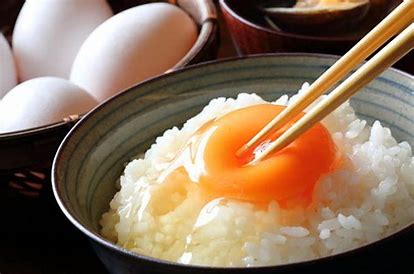Japanese people love eating Nattou!



Japanese people eat natto for several reasons, rooted in both cultural history and health benefits. Natto is a traditional Japanese food made from fermented soybeans, known for its strong smell, sticky texture, and rich nutritional value. Here are some key reasons why it’s a staple in the Japanese diet:
- Nutritional Benefits: Natto is highly nutritious. It’s a great source of protein, vitamins (especially Vitamin K2), minerals, and probiotics. Vitamin K2 is essential for bone health, helping to prevent osteoporosis. The probiotics in natto support gut health, enhancing digestion and boosting the immune system.
- Historical Significance: Natto has been part of the Japanese diet for centuries. It’s believed to have been discovered accidentally when soybeans were stored in straw, which naturally contains the bacteria Bacillus subtilis natto. This traditional method of making natto has been passed down through generations, making it a culturally significant food.
- Economic and Practical Aspects: Soybeans are relatively easy to grow and harvest, making natto an economical source of nutrition. Additionally, natto’s fermentation process preserves the soybeans, allowing them to be stored for extended periods. This made natto a practical and reliable food source, especially before modern refrigeration.
- Health Benefits: Beyond its nutritional content, natto is linked to various health benefits. It is associated with reduced risks of heart disease and stroke, thanks to its ability to improve blood circulation and reduce blood clotting. Some studies suggest that the regular consumption of natto may also contribute to a lower risk of certain cancers.
- Dietary Integration: Natto is versatile and can be easily integrated into the Japanese diet. It’s commonly eaten with rice, in sushi, or as a topping for other dishes. Its distinctive flavor and nutritional profile make it a popular choice for breakfast or any meal of the day.
Despite its health benefits and cultural significance, natto’s unique texture and smell may not be appealing to everyone, including some within Japan. However, for many Japanese people, natto remains a beloved and essential part of their cuisine, cherished for its deep roots in tradition and its contributions to health and well-being.

I’m gonna tell you history of Nattou.
The history of natto dates back over a thousand years in Japan, with its origins shrouded in legends and historical anecdotes. It’s a food that has been intertwined with Japanese culture, cuisine, and health practices for centuries. Here’s a brief overview of natto’s history:
Origins
The precise origins of natto are unclear, but there are several theories and legends. One popular legend suggests that natto was discovered accidentally in northeastern Japan around the 11th century. According to this story, soldiers of Minamoto no Yoshiie, a famous samurai, were boiling soybeans for their horses. When they were suddenly called to battle, they packed the cooked soybeans in straw and stored them. Upon their return, they found that the soybeans had fermented but were still edible. The soldiers ate the fermented soybeans and enjoyed them, leading to the birth of natto.
Historical Development
- Heian Period (794-1185): Some historical records suggest that a form of natto might have been eaten during this period. However, it’s likely that the fermentation process and the resulting product were quite different from today’s natto.
- Edo Period (1603-1868): Natto became more widely consumed among the Japanese population, particularly by the common folk. It was a valuable source of protein in a predominantly vegetarian diet due to Buddhist influences.
- Meiji Period (1868-1912) and Beyond: The production and consumption of natto spread throughout Japan. Advances in understanding fermentation processes and microbiology led to improved and standardized methods of natto production.
Cultural and Nutritional Significance
Natto has been valued not only for its nutritional benefits, including high levels of protein, vitamins, and probiotics but also for its cultural significance. It has been a staple in the Japanese diet, especially in breakfast meals.
Modern Times
In the 20th century, scientific studies began to uncover the specific health benefits of natto, attributing them to its unique fermentation process. The discovery of nattokinase, an enzyme in natto that helps prevent blood clots, highlighted its medicinal properties. Today, natto is celebrated for its health benefits, including improving heart health, aiding digestion, and contributing to bone strength.
Production and Consumption Today
Modern production methods have made natto more accessible while retaining traditional fermentation techniques. It is widely available in supermarkets in Japan, often packaged with mustard and soy sauce for flavor. Despite its strong smell and sticky texture, which can be off-putting to some, natto remains a beloved food for many Japanese people, embodying a rich history and tradition.
The history of natto is a testament to the innovation and cultural heritage of Japan, reflecting the country’s ability to create nourishing, sustainable foods that have persisted through the centuries.
 Why Japanese people love eating Natto
Why Japanese people love eating Natto


 Why Japanese people eat raw eggs
Why Japanese people eat raw eggs

 Beer Gardens in Tokyo
Beer Gardens in Tokyo Delicious hamburger restaurants in Tokyo
Delicious hamburger restaurants in Tokyo Recommended ice cream shops perfect for hot weather in Tokyo Japan
Recommended ice cream shops perfect for hot weather in Tokyo Japan